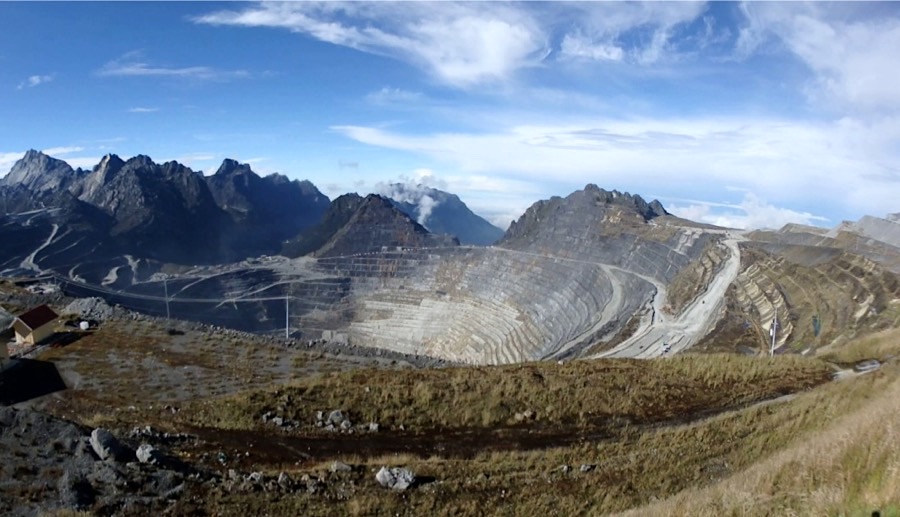Indonesia’s Freeport-Rio plan masks longer-term issues: Russell

LAUNCESTON, Australia, Dec 7 (Reuters) – A proposed three-way deal between the Indonesian government, Rio Tinto and Freeport-McMoRan to clean up the ownership of the giant Grasberg copper-gold mine looks like one of those rare situations where everybody wins.
Except that it isn’t.
Certainly all parties may walk away feeling that they have achieved the best outcome, assuming the complicated deal can be pulled off at a price acceptable to all three.
But this ignores the wider picture in which any short-term advantage is likely to be offset by compounding longer-term problems.
First, a brief re-cap of what’s at stake.
Grasberg is the world’s second-largest copper mine, as well as being one of the five-biggest gold mines, and is further advantaged by having high grades and low costs.
Freeport owns just over 90 percent of the mine, but Rio Tinto, under a 1996 joint venture, has a 40 percent interest in Freeport’s contract, entitling it to 40 percent of production above specific levels until 2021 and 40 percent of all production after 2022.
In August Freeport agreed to sell 51 percent of its Indonesian unit to the government in order to meet the requirements of the Southeast Asian nation’s revised mining law.
In return, Freeport was to retain operational control of the mine, build a copper smelter and be allowed to apply to extend its mining licence.
However, the Indonesian government said on Dec. 5 that it intends to acquire Rio Tinto’s stake in Grasberg, which would then make up the bulk of its required shareholding, leaving Freeport with a larger stake than it would have had under the August deal.
Jefferies analyst Christopher LaFemina said in a note to clients that it was potentially an “elegant” solution to the long-running dispute between Freeport and the Indonesian government.
If the deal can be finalised, LaFemina is absolutely correct in that it solves a near intractable problem.
However, getting out of a difficult situation ignores how the problem was created in the first place, and what the consequences have been.
The dispute between Freeport and Indonesia stems from a change in government policy aimed at ensuring greater domestic control over the country’s natural resources.
Measures implemented by the government include forcing foreign mine owners to divest a majority stake to local investors, and banning, or limiting, the export of mineral ores to ensure investment in downstream processing, such as smelting.
Even if the aims of the policy are noble, insofar as they are trying to ensure Indonesians benefit the most from their own natural resources, the implementation has been far from ideal.
Resource nationalism costs
Indonesia went from being China’s top supplier of nickel ore, and a major provider of bauxite, to exporting almost zero of these two minerals to the world’s biggest buyer.
The planned investment in copper smelters has yet to be realised, and while some money has been spent building nickel processors, it’s doubtful they have created much in the way of jobs or additional revenue for the government.
Investment in coal mines by foreigners has plummeted, leading to flat to small growth in output, despite a strong rally in the price of thermal coal. Indonesia is the world’s largest exporter of the coal used in power stations.
Indonesia has recently back-tracked on some of the bans on exporting mineral ores, imposed in 2014.
The country has started shipping nickel ore and bauxite, the raw material used for aluminium, to China, but it is struggling to replicate its prior dominance.
In the first 10 months of 2017, Indonesia was China’s second-largest supplier of nickel ore, but its 2.9 million tonnes was dwarfed by the 24.9 million supplied by the Philippines.
In bauxite, Indonesia supplied China with 562,926 tonnes in the first 10 months, a mere fraction of supplies from the top exporters – Guinea with 21.8 million tonnes and Australia with 20.6 million.
In addition to the monetary cost of its resource nationalism, Indonesia is paying the price when it comes to attracting new investment.
It slipped 29 places to 78th out of 104 jurisdictions in 2016 assessed for their attractiveness for mining investment, according to survey compiler the Fraser Institute.
The fact that a company such as Rio Tinto, the world’s second-largest mining company, appears prepared to exit its stake in what is one the world’s best copper and gold resources speaks volumes on how attractive Indonesia has become to foreign mining companies.
While Rio Tinto may get an acceptable payment for its Grasberg stake, it’s also likely a long-term loser as it misses out on a stake in Grasberg, just as the outlook for copper is brightening given its role in batteries for power storage and electric vehicles.
Surely Freeport is at least a winner? Yes, in the sense that the company finally resolves its dispute with the Indonesian government, but perhaps not so much given the costs involved.
The Arizona-based company may have to invest as much as $20 billion by 2031 to develop the mine and a copper smelter, at the same time paying higher royalties and taxes and having divested a majority stake.
Overall, if an agreement can be reached, it will probably represent the best outcome for a bad situation. That’s not quite the same as a win-win-win for Indonesia, Freeport and Rio Tinto.
(Column by Clyde Russell; Editing by Richard Pullin)
{{ commodity.name }}
{{ post.title }}
{{ post.date }}

Comments